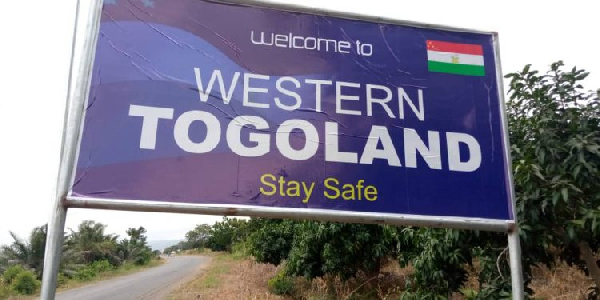At the end of World War Two, the United Nations, established under Chapter XII of its Charter, the International Trusteeship System.
The purpose of the UN Trusteeship System was to enable it to supervise the trust territories placed under it.
By the provisions of the UN Charter, countries administering territories that were not yet independent, must seek the approval of the organisation.
Individual agreements with the territories by administering countries must be made and approved by the UN.
Article 77 of the UN Charter established the following categories to which a trust territory must belong:
• Territories held under League of Nations Mandate;
• Territories which might be detached from enemy states as a result of the Second World War; and
• Territories voluntarily placed under the system by states responsible for their administration.
According to Article 76 of the UN Charter, one of the purposes for the establishment of the International Trusteeship System is “to promote the political, economic, social, and educational advancement of the inhabitants of the trust territories and their progressive development towards self-government or their independence as it may be appropriate to the particular circumstances of each territory and its peoples and the freely expressed wishes of the peoples concerned, and as may be provided by the terms of each trusteeship agreementâ€.
For the purpose of furthering smooth functioning of the International Trusteeship System, the UN established the Trusteeship Council “to supervise the administration of the trust territories and to ensure that governments responsible for their administration took adequate steps to prepare them for achievement of the Charter goalsâ€.
Â
The UN Charter gives the Trusteeship Council, the authority to examine and discuss reports from the administering authorities as per Article 81 of the Charter on the political, economic, social and educational advancement of the peoples of the trust territories; to examine petitions from the territories and to undertake special missions to them.
11 territories
After World War Two, the UN, in 1946, placed under the Trusteeship System, more than 11 territories that met the criteria.
Some of them were: Western Samoa; Tanganyika; Rwanda–Urundi; Cameroon (under British administration); Cameroon (under French administration); Togoland (under British administration); Togoland (under French administration); New Guinea; Nauru; the Pacific Islands and Italian Somali- land.
By 1993, the more than 11 territories had either attained independence status or had united voluntarily with neighbouring independent countries.
For example, Tanganyika, a German colony that became a mandated territory of League of Nations and later, UN trust territory, attained independence in 1961 and, thereafter, united with independent Zanzibar with the new name, Tanzania.
Rwanda-Urundi, a Belgian UN trust territory, voted at plebiscite to become separate independent countries known as Rwanda and Burundi.
British Cameroon voted at plebiscite to leave Nigeria and join its fellow former German colony and mandated and trust territory, French Cameroon, as one independent nation.
French Togoland, also a former German colony and mandated and trust territory, achieved independence from France in 1960.
Pacific Islands, known as Palau, was the last trust territory under the International Trusteeship System that achieved independence in 1994, from the United States that administered it.
After becoming independent in 1994, Palau was admitted as 185-member state of the UN.
Having divested itself of the responsibility for the last trust territory, the International Trusteeship System folded up in 1994.
However, the Trusteeship Council is in existence, in principle, as an organ of the UN.
Trust territory
On Western Togoland, that became British Togoland, it was a trust territory administered by Britain under a trusteeship agreement approved by the UN by resolution No. A/RES/63 of December 13, 1946.
In 1956, the UN terminated the trusteeship agreement between the Western Togoland people and Britain.
 That happened after the British government, at the request of the UN, conducted a plebiscite supervised by the Trusteeship Council in Western Togoland on May 9, 1956.
In the plebiscite, majority of the voters decided that Western Togoland should unite with the Gold Coast after independence on March 6, 1957.
Voter turnout was 83 per cent, representing 160,587; and 58 per cent of that number, that is 93,093, voted for unification with the Gold Coast.
Forty-two per cent, or 67,492, voted for separation of Western Togoland from the Gold Coast.
The plebiscite took place in six separate districts of British Togoland – (1) Mamprusi, (2) Dagomba, (3) Gonja, (4) Buem-Krachi, (5) Kpandu and (6) Ho.
Non-Ewe-speaking people of north-Western Togoland voted overwhelmingly for unification, while voters in Ewe-speaking Kpandu and Ho opted for separation.
The recent history of Western Togoland began when it became a Nazi German colony in 1884.
Nazi Germany was defeated in the First World War (1914-1918).
Treaty of Versailles
After signing of the Treaty of Versailles, the western part of German Togoland went to Britain and the eastern, to France, and both became League of Nations mandated territories.
At the end of World War Two (1939-1945), both British Togoland and French Togoland became UN trust territories administered by Britain and France, respectively.
In 1945, the UN replaced the League of Nations, and mandated territories of the League, transferred to the new international organisation.
The colonial and the trust territorial histories of Western Togoland and of other UN trust territories, are not fairy tales or Ananse stories, that can be varied and retold.
Documents on trusteeship agreements and termination of those agreements after due process, and resolutions on them at the General Assembly, the Security Council and the Trusteeship Council -- are available in the archives of the UN.
By Larweh Therson-Cofie





